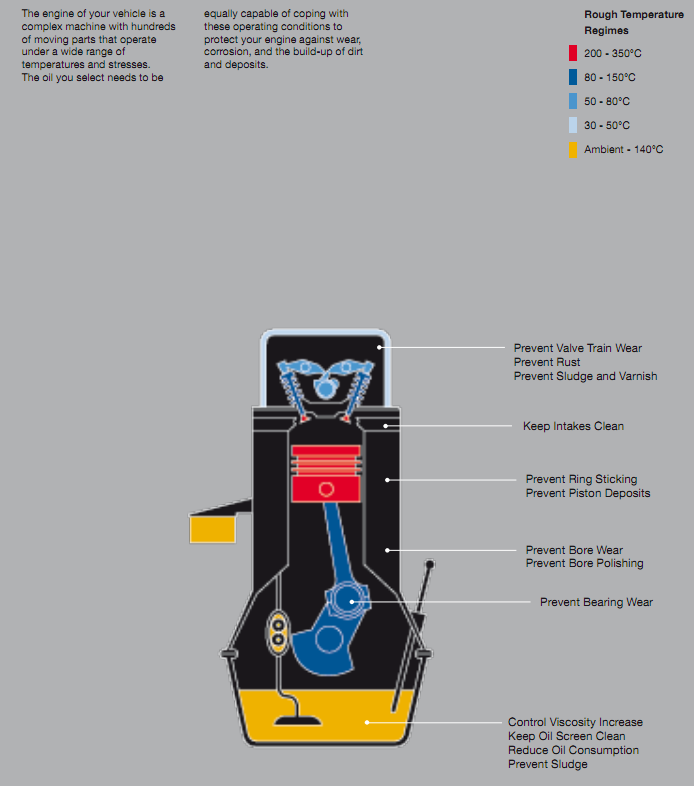Originally Posted By: GMorg
I would think that oil on the cylinder walls/piston rings and on the exhaust valve seals would be at the hottest temps that an oil would experience. I expect that the temperature at these locations would be much higher than in the sump or bearings.
I also expect that the graphs above are on a fahrenheit scale.
An excerpt from the Mobil 1 presentation I linked to above:

I would think that oil on the cylinder walls/piston rings and on the exhaust valve seals would be at the hottest temps that an oil would experience. I expect that the temperature at these locations would be much higher than in the sump or bearings.
I also expect that the graphs above are on a fahrenheit scale.
An excerpt from the Mobil 1 presentation I linked to above:


